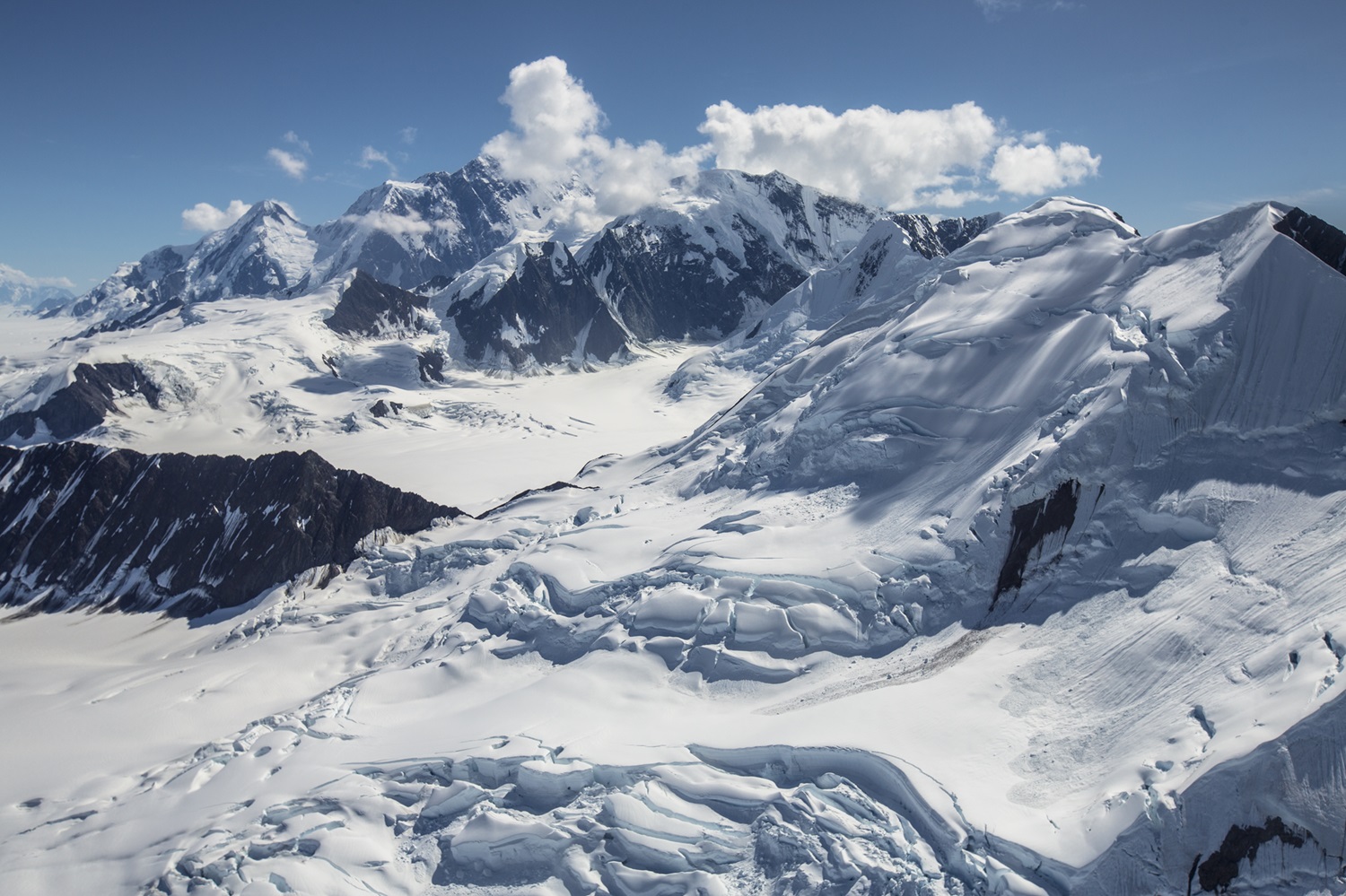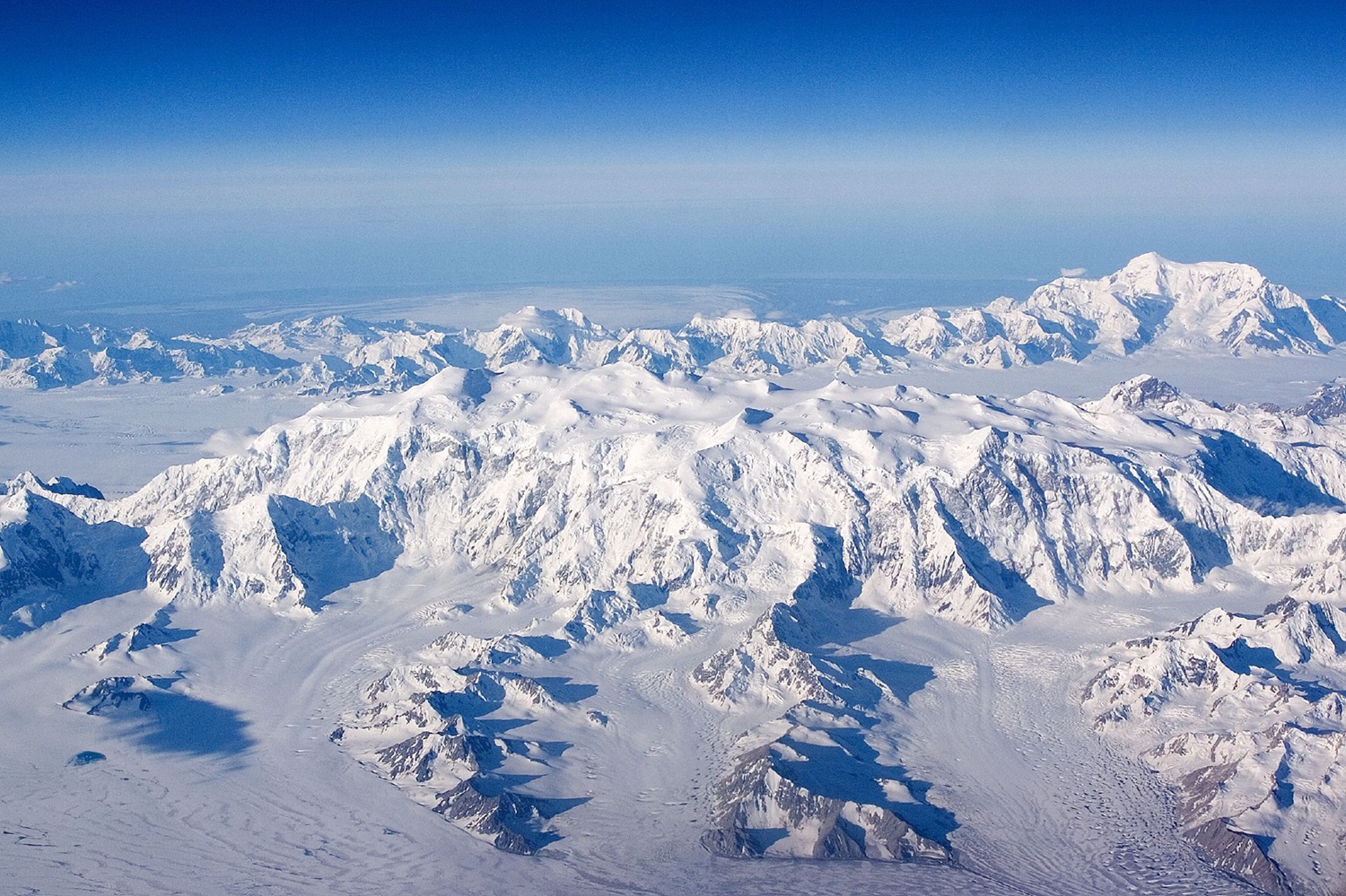
Description
A mountain range is a linear arrangement of mountain peaks and ridges surrounded by adjacent lower land or clearly separated from adjacent ranges by intervening valleys. The mountains of a range are commonly related to a single geological structure or rock formation. A group of related peaks with a circular rather than linear arrangement is called a massif. An array of mountain ranges, massifs and other topographic elements of related origin comprise a mountain system, and several systems a cordillera. The Cordillera of western North America extends from Mexico to Alaska and includes about 20 mountain systems each composed of many mountain ranges.
Formation
The Earth's major mountain systems lie along the margins of crustal plates where concentrated tectonic forces have caused uplift, deformation and igneous activity (see Geological Processes; Plate Tectonics). Individual mountain ranges may be formed by volcanic eruptions or, more commonly, by differential erosion of an uplifted terrane (i.e. an area of similar rock formations). Rapid uplift accompanied by slow erosion results in a plateau. If erosion keeps pace with uplift, streams and glaciers erode away less competent rock, leaving more resistant rock standing as mountain ranges between the valleys.
In Canada, the Rocky Mountains began to decline after an episode of deformation about 70 million years ago. The subdued topography of the ancient Appalachian Mountains is the result of erosion during the 150 million years since the last major uplift and deformation in eastern Canada. Submarine mountain ranges, which rise from the ocean floor along mid-ocean ridges, such as the mid-Atlantic Ridge and East Pacific Rise, are of volcanic origin. On the moon and on planets that have little atmosphere, such as Mercury and Mars, circular or crescent-shaped mountain ranges around impact craters have survived for hundreds of millions of years without being destroyed by erosion.
Mountain Ranges in Canada
The long, narrow ranges of the Rocky Mountain system of western Canada reflect the structure of resistant beds of folded and faulted sedimentary strata; the broader ranges and massifs of the Coast Mountains of British Columbia were etched by water and glacier ice from an uplifted, granitic terrane of more uniform resistance to erosion. The relief and ruggedness of a mountain range depend on its age. The precipitous, young ranges of the St. Elias Mountains in the southwestern Yukon, where rapid uplift is still proceeding, include the highest individual peaks in Canada.
See also Geological Regions; Volcano.

 Share on Facebook
Share on Facebook Share on X
Share on X Share by Email
Share by Email Share on Google Classroom
Share on Google Classroom



